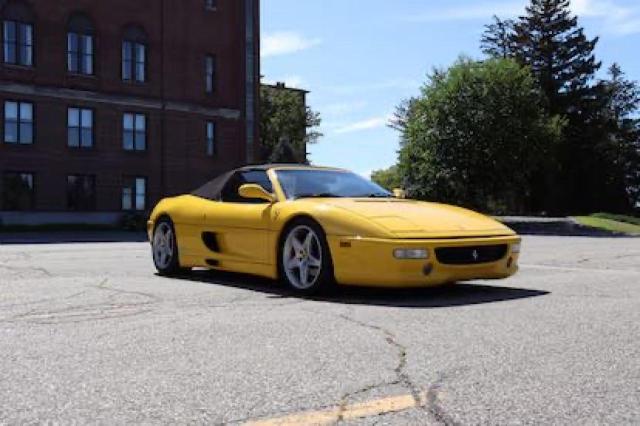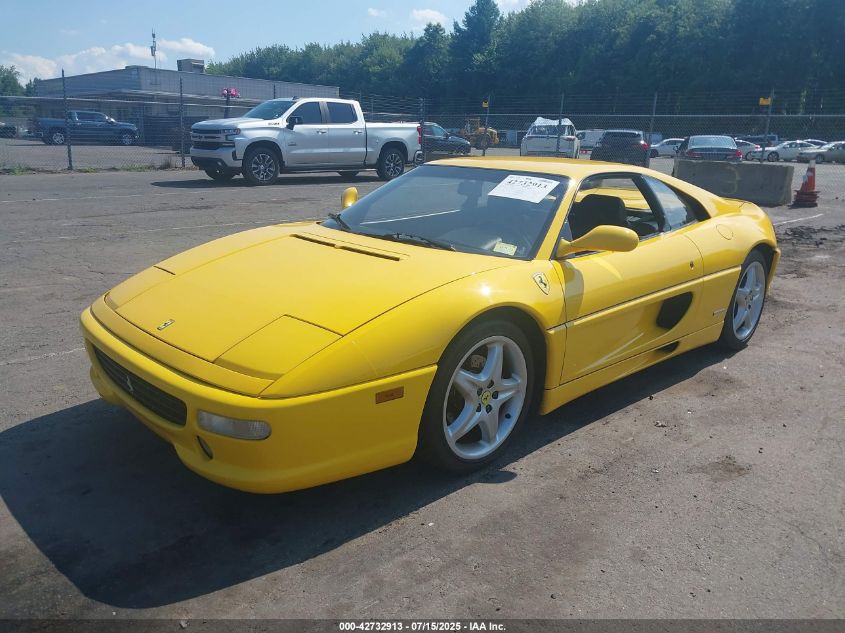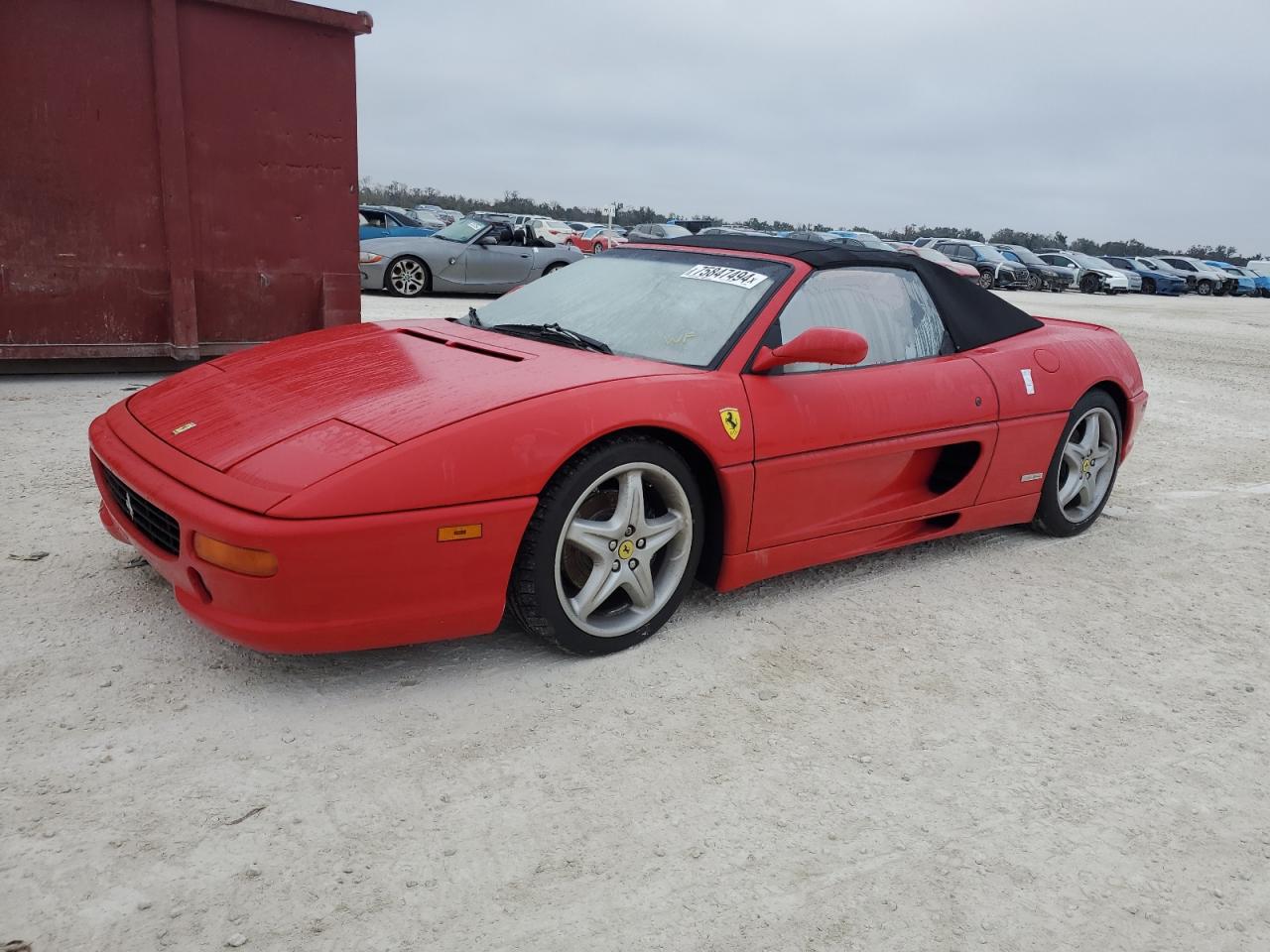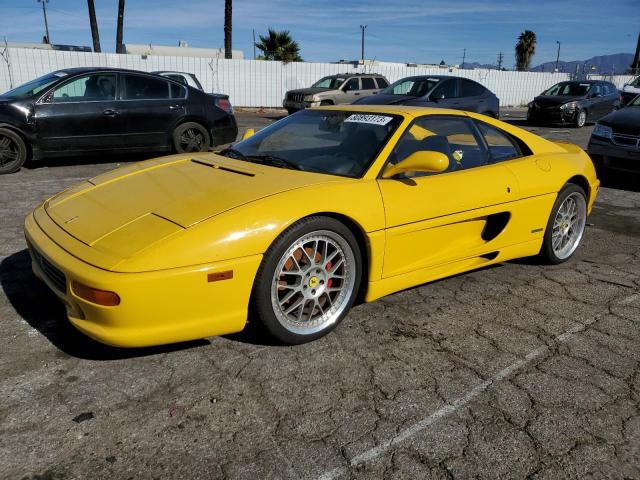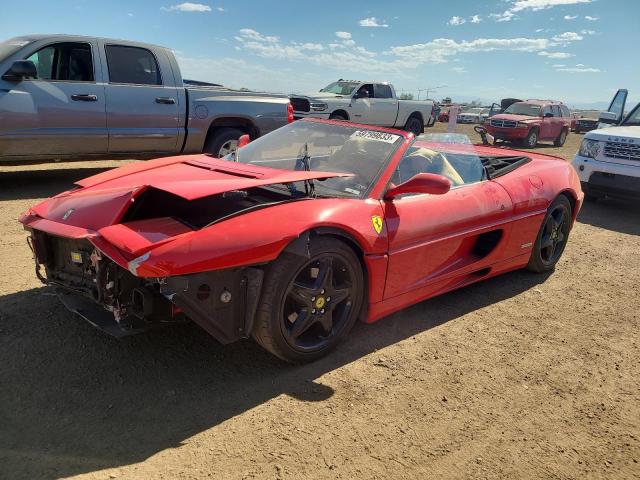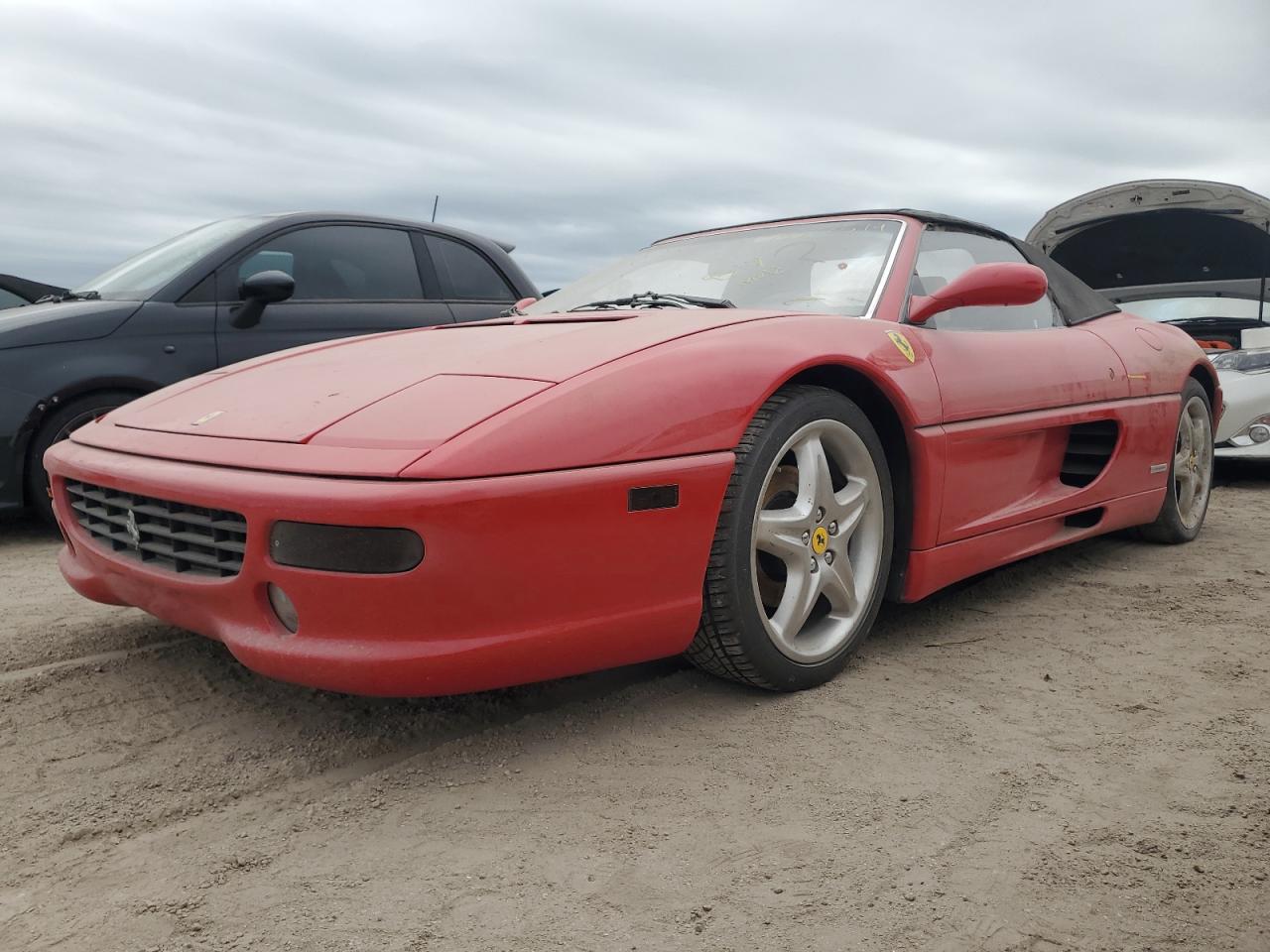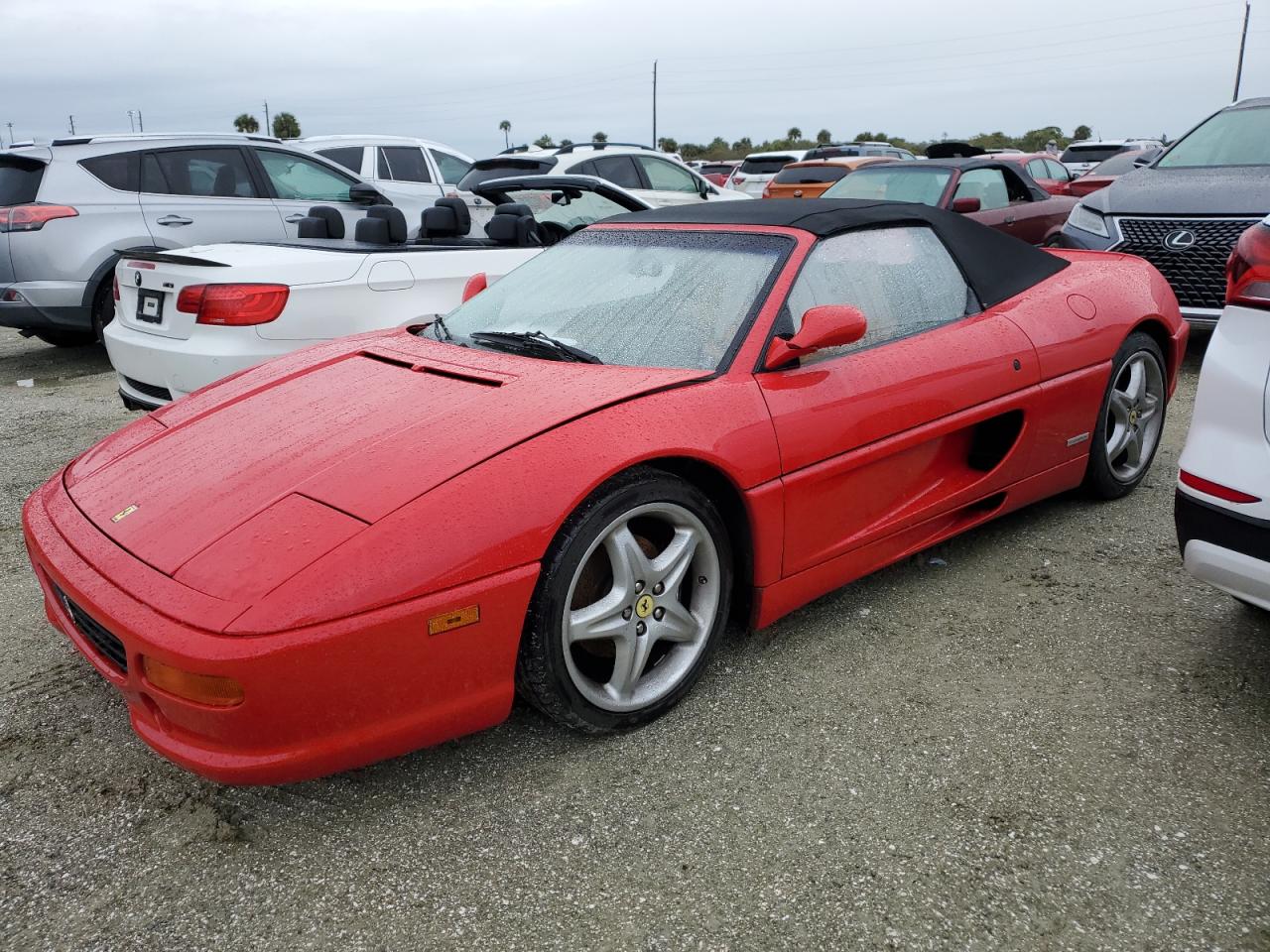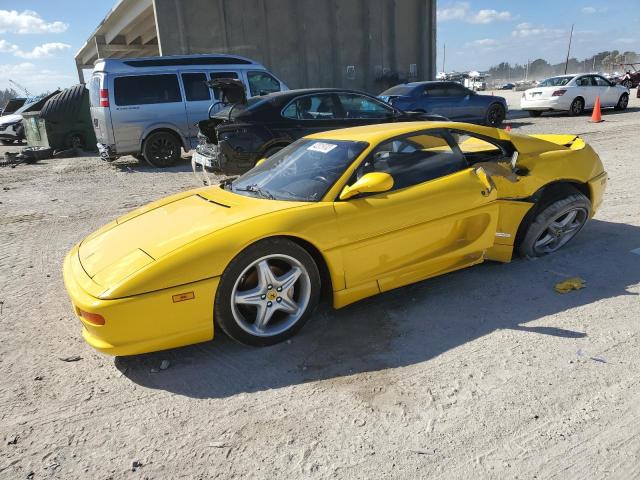1996 FERRARI F355 | ZFFPR42B000103319
Lot details
- Sale Date2024-04-22
- Lot Number38978682
- ACV231639 $
- Sale documentSalvage (Georgia)
- LocationDream Rides (IL)
- Odometer46,838 miles (75,378 km)
- Primary DamageREAR
- Secondary DamageUNKNOWN
- SellerPhiladelphia Insurance Companies
Vehicle specifications
1
~$140,000
Engine: 3.5L naturally aspirated V8
Torque: 363 Nm
0–100 km/h: ~4.7 s
The Ferrari F355 Serie Fiorano represents the pinnacle of Maranello’s analog V8 era — combining a razor-sharp, high-revving 3.5L engine with track-derived handling and raw, mechanical feedback. With 380 hp and a redline over 8,200 rpm, it delivered a visceral experience unmatched by many of its successors.
The naturally aspirated 5-valve-per-cylinder V8 was a technological leap for its time, offering exceptional breathing and throttle response. Paired with either a gated 6-speed manual or Ferrari’s first-generation F1 electrohydraulic transmission, the F355 could sprint to 100 km/h in under 4.7 seconds, delivering its power with a spine-tingling mechanical shriek.
The Serie Fiorano version — produced in just 104 units at the end of the F355’s life — added competition-inspired upgrades: carbon brakes, faster steering rack, stiffer springs, revised damping, and subtle aero tweaks. It brought out the full potential of the F355 chassis while maintaining road usability.
With timeless Pininfarina design, compact proportions, and no digital filters, the F355 Serie Fiorano earns its place in the performance registry as the last great analog Ferrari V8 — a symbol of precision, purity, and the end of an era before turbos and traction control took over.
Final Bid Ferrari F355 (1996)
$35,000
$53,719
$91,075
Body Styles
The Ferrari F355 was offered in three core body styles: the Berlinetta coupe, GTS with a removable targa roof, and the Spider convertible. The Berlinetta introduced Ferrari’s sleekest wedge silhouette yet, with flying buttresses at the rear and retractable headlights still present. The GTS retained the coupe’s profile while offering an open-top option with greater rigidity than the Spider. The Spider dropped the buttresses and added a full power-operated soft top. All versions were mid-engine and featured a rear clamshell hood, circular taillights, and quad tailpipes – a visual link to both the past and the future of Ferrari design.
Model Name Meaning (Manufacturer)
The name “F355” reflects the engine’s displacement and cylinder count: 3.5 liters and 5 valves per cylinder, hence 355. It was a milestone model, marking the end of Ferrari’s use of pop-up headlights and the beginning of computer-aided aerodynamics. The F355 was also the first Ferrari available with an F1-style automated manual gearbox, introduced in 1997. It represents Ferrari’s transition from raw analog to modern semi-digital performance, retaining the spirit of the 348 while refining every possible weakness.
Model Name Meaning (Languages)
Globally, “F355” was one of the easiest Ferraris to recognize and pronounce, carrying universal appeal with a numeric identity that required no translation. In European markets, it reinforced Ferrari’s racing technology (with “F” suggesting Formula), while in English-speaking countries, the name quickly became shorthand for 1990s Ferrari elegance and emotion. The suffixes “GTS,” “Spider,” and “Challenge” followed standard Ferrari naming logic across markets, while “Serie Fiorano” paid tribute to Ferrari’s test track and limited-run tuning upgrades.
Body & Interior Colors and Rims
The F355 was offered in a broad palette of classic Ferrari shades. The most iconic color was Rosso Corsa, followed by Giallo Modena, Blu Pozzi, Argento Nürburgring, Nero Daytona, and Verde Silverstone. The Spider and GTS models were especially popular in Giallo and Blu Le Mans, paired with tan or black leather interiors. Ferrari also offered Rosso Barchetta, a deeper, more mature red, as well as rare hues like Tour de France Blue and Swaters Blue, which today command collector premiums.
The interior was minimalist but luxurious, with supple leather across the dash, seats, and door cards, typically in Tan (Cuoio), Nero, or Sabbia. Manual models featured Ferrari’s legendary open-gated aluminum shifter, while F1 variants introduced early paddle controls mounted behind a small-diameter leather-wrapped steering wheel. Instrumentation remained analog and classically laid out, with white-on-black gauges and yellow central tachometer.
Wheel designs varied over the years: early F355s featured 17-inch five-spoke magnesium wheels, while later versions and Fiorano editions received 18-inch two-piece forged alloys, often with titanium center caps. Challenge cars had lightweight Speedline alloys with single-lug centers and drilled rotors. Tire sizes were staggered, and brake calipers could be ordered in red, yellow, or silver depending on market and dealer.
Top Expensive Options
- F1 Transmission (from 1997 onward): ~$10,000 premium
- Carbon-Kevlar Racing Seats (Challenge and Fiorano): rare, ~$15,000+ on market today
- Fiorano Handling Pack (stiffer dampers, lowered ride, drilled brakes): ~$8,000
- Scuderia Ferrari Shields (fender-mounted): ~$1,200
- Painted Calipers with Ferrari Logo: ~$800
- Leather Dash and Headliner Trim: ~$2,000
- Rosso Barchetta or Blu Corsa Special Paints: ~$3,000
- Hi-Fi Sound System (Becker or Pioneer units): ~$1,000
- Tubi Style Sport Exhaust (dealer installed): ~$3,500
- Challenge Rear Grille (mesh, optional on road cars): ~$1,200
vs Competitors
The F355 competed with the Porsche 911 Turbo (993), Honda NSX, Lamborghini Diablo VT, and TVR Cerbera Speed Six. Against the NSX, the F355 was more emotional and less clinical. Compared to the 911 Turbo, it was lighter and more agile but less reliable and more demanding to maintain. The Diablo was faster but far less usable. The F355 hit the sweet spot of raw V8 excitement, stunning aesthetics, and relative accessibility, making it a modern icon of analog Ferrari design. It was often praised for delivering one of the best exhaust notes ever produced and for its beautifully balanced mid-engine dynamics.
Fun Fact
The F355 was the first Ferrari road car to feature a 5-valve-per-cylinder engine, allowing it to rev to 8,250 rpm and produce an incredibly sharp throttle response. Its sound – a shrieking, high-pitched wail – was so celebrated that the F355’s exhaust system was often used in early video game sound libraries, including Gran Turismo and Need for Speed. Today, the manual Berlinetta is considered the most collectible version, especially in rare colors with low mileage and no sticky interior plastics.


